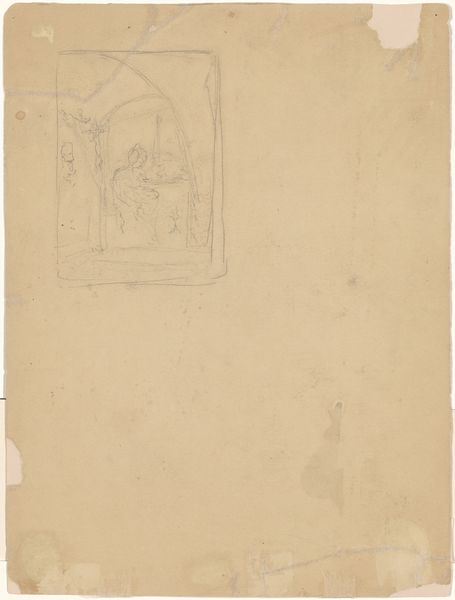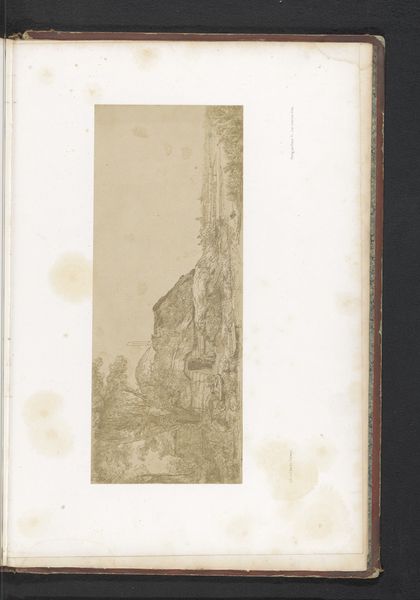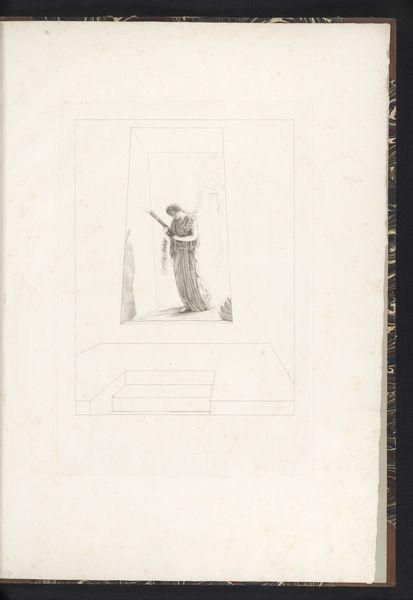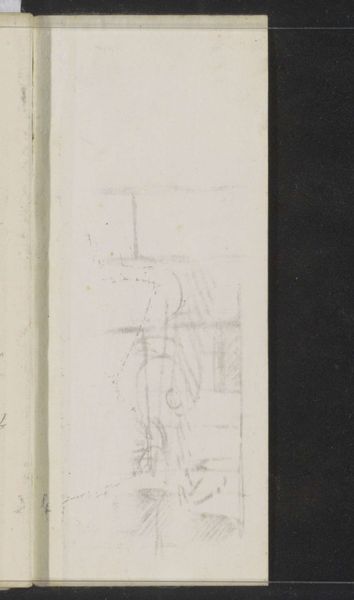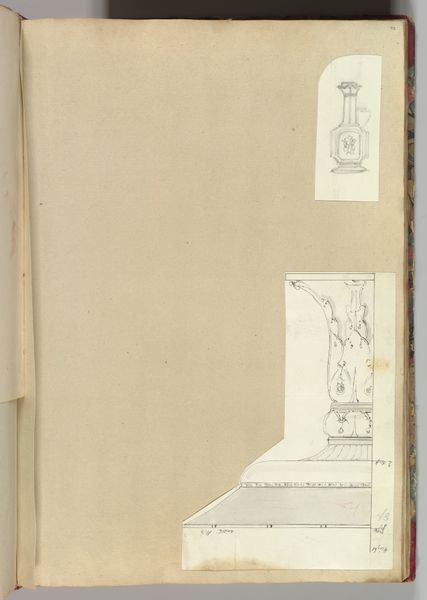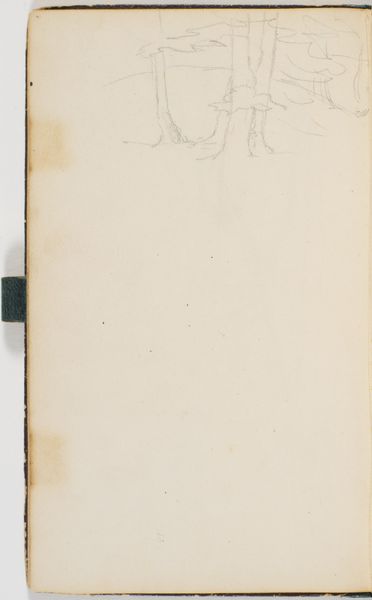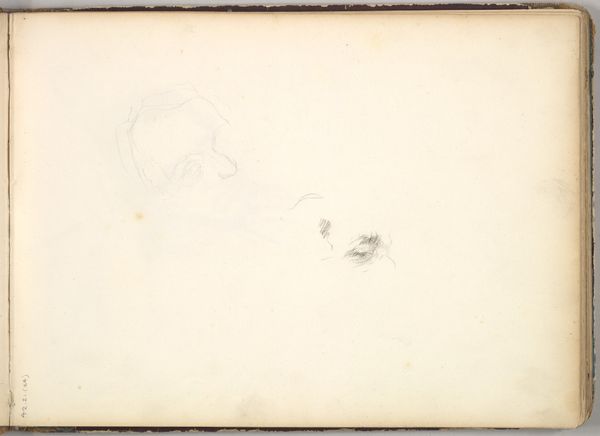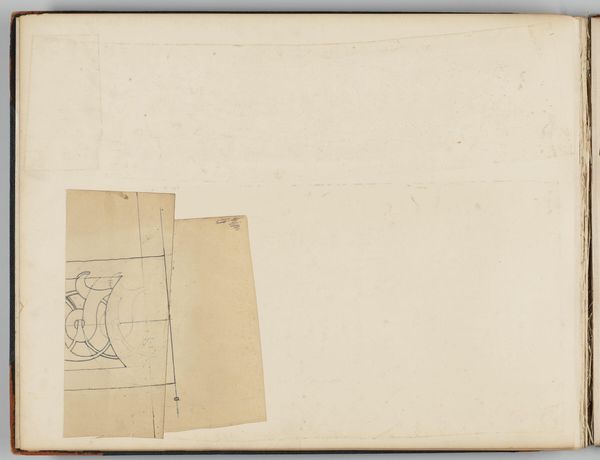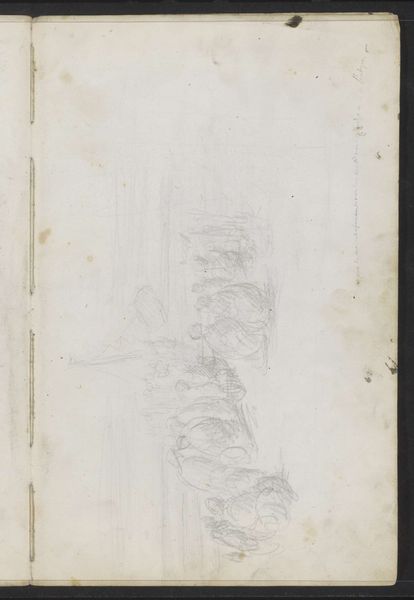
Udkast til maleriet " Chione dræbt på jagten af den krænkede Diana" 1864 - 1867
0:00
0:00
drawing, pencil
#
drawing
#
figuration
#
pencil
#
history-painting
#
academic-art
#
watercolor
#
realism
Dimensions: 71 mm (height) x 118 mm (width) x 14 mm (depth) (monteringsmaal), 63 mm (height) x 113 mm (width) (bladmaal)
Editor: So, this is "Udkast til maleriet \"Chione dræbt på jagten af den krænkede Diana\"" by L.A. Schou, from 1864 to 1867. It's a pencil drawing. I find the sketchiness intriguing – you can almost see the artist thinking. What stands out to you about this work? Curator: Considering this is a preparatory drawing, what interests me most is understanding how materials influence the creation of historical narratives. Here we see a pencil, a readily available and inexpensive material. How does this medium democratize the process of depicting grand mythological subjects that were, at the time, symbols of aristocracy? Editor: That’s interesting – the cheapness of the pencil juxtaposed against the elite subject matter. Curator: Exactly. Academic art often idealized its subjects. However, here, we see the marks, the labor of production laid bare. Notice the swift, repetitive strokes used to convey movement and tension, as if Schou is almost mass-producing this historical drama, transforming labor into a tangible aspect of artistic creation. Does this quick production style influence how you understand this sketch? Editor: It does! Seeing the clear marks of production shifts the focus away from simply illustrating a story and towards considering the physical act of drawing itself, the labor involved in its creation, as part of its meaning. Curator: Precisely! Furthermore, thinking about the distribution of drawings – were these for an elite patronage system, for more public consumption as prints? Thinking of this image less as “high art” and more a product that mediates social stories, who had access, who profited, who learned from this particular version of this Greek myth. Editor: I hadn’t considered that before. It reframes the way I see even preparatory sketches of grand paintings! Curator: Exactly! It reminds us that art-making isn’t detached from broader processes of labor and distribution, even for mythic imagery. We often discuss “ideas” in art. But considering artistic expression within the conditions of material production exposes some social and political choices involved with something as seemingly timeless as Greek myth.
Comments
No comments
Be the first to comment and join the conversation on the ultimate creative platform.
